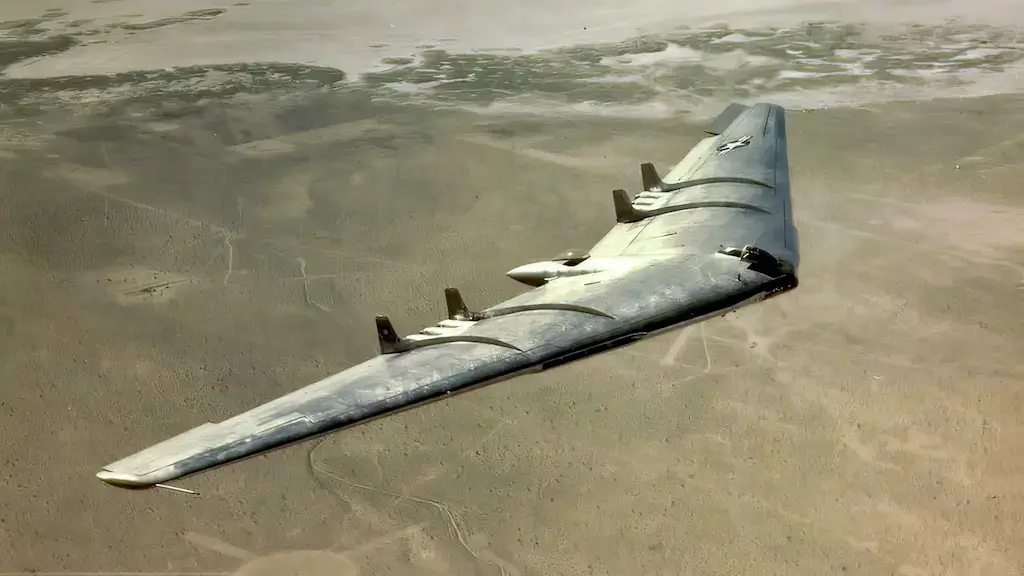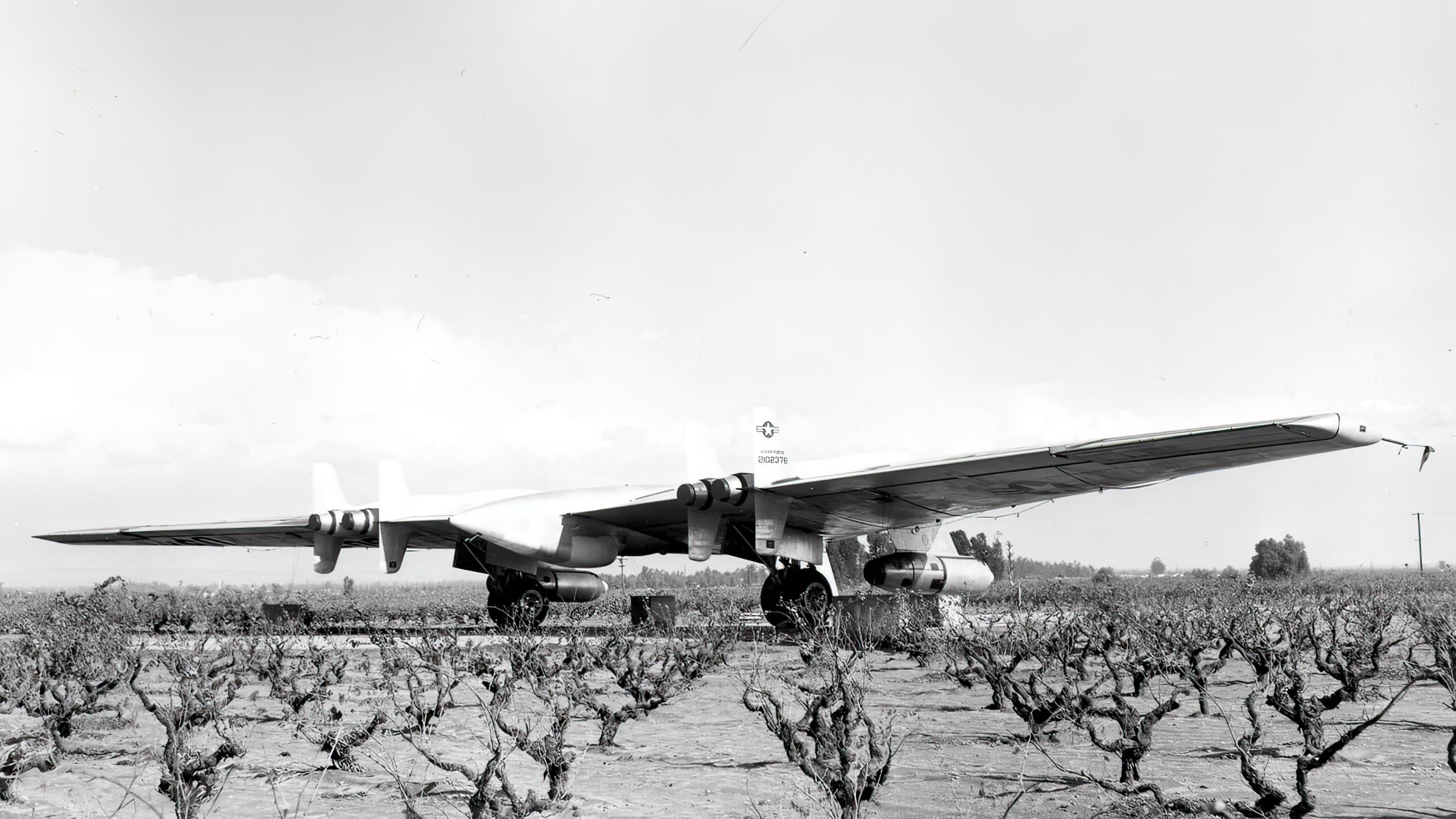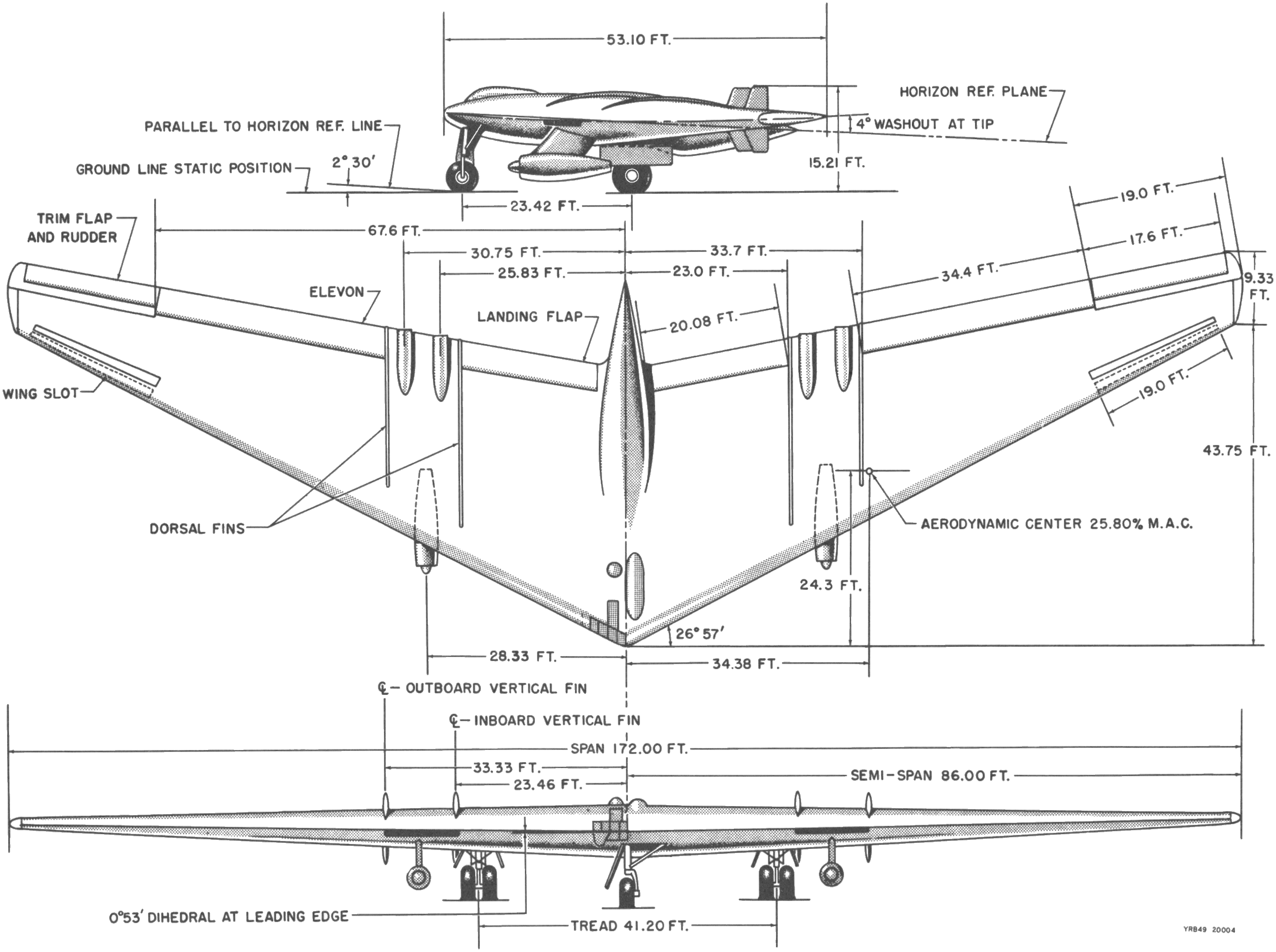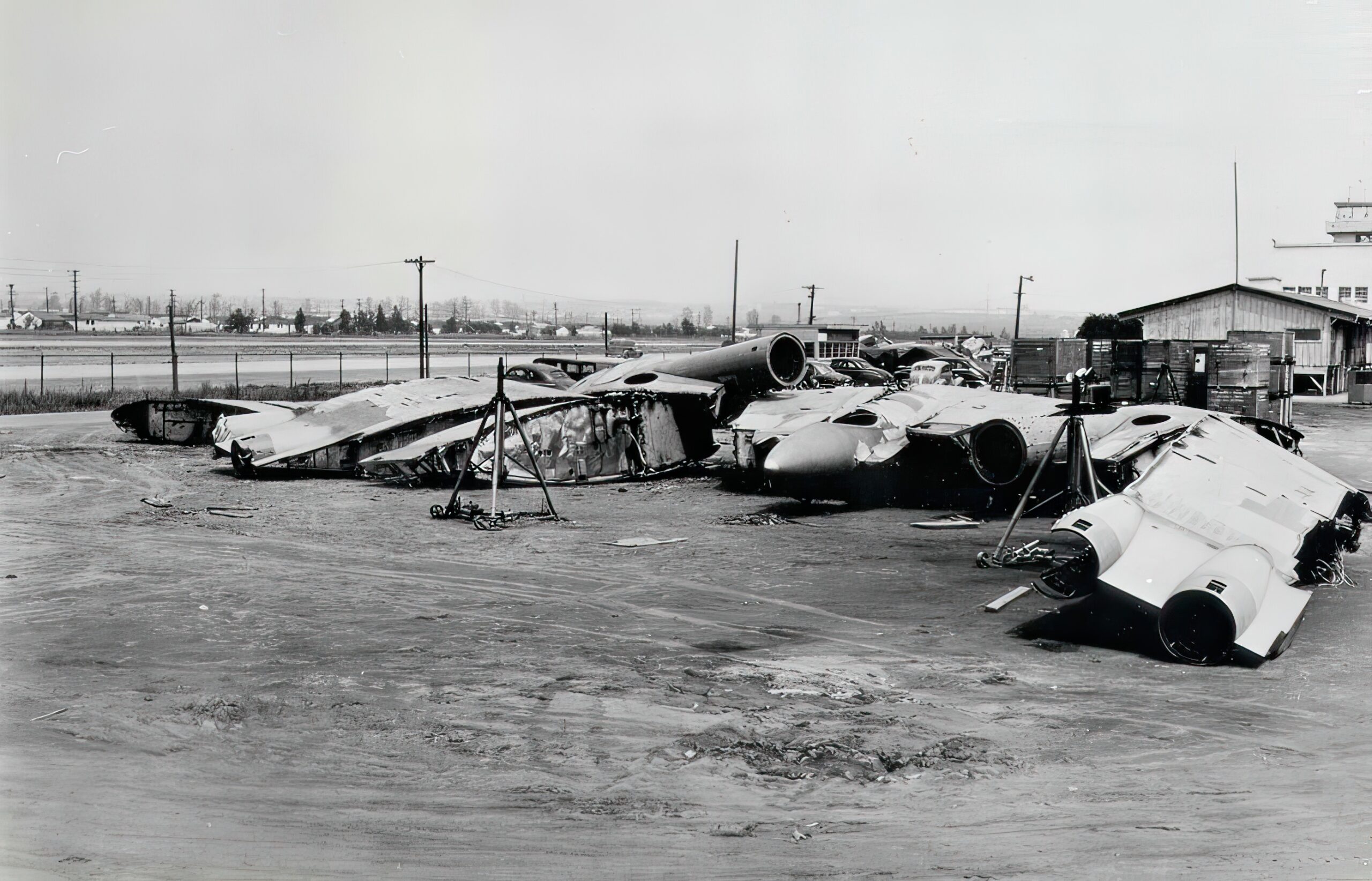
In the annals of aviation history, there are certain aircraft that stand out not only for their innovative design but also for their significant impact on shaping the future of flight. One such aircraft is the Northrop YB-49, an experimental flying wing that pushed the boundaries of aeronautical engineering and paved the way for modern stealth technology.
Design Features and Innovation
The Northrop YB-49 was a radical departure from conventional aircraft design, embodying several pioneering features with the Flying Wing Design. The aircraft’s entire body served as the wing, eliminating the need for a separate fuselage. This design approach minimized drag and improved stability, thereby enhancing overall performance.

The YB-49 featured swept wings with an impressive 45-degree sweep angle. This design choice helped mitigate the effects of compressibility at high speeds and contributed to improved aerodynamic efficiency. The YB-49 was powered by eight jet engines, distributed along the trailing edge of its wings. This propulsion system not only granted the aircraft impressive speed but also allowed for smoother airflow over the wings. With its advanced materials the aircraft employed cutting-edge materials for its construction, including aluminum alloys and composite materials. This allowed for a strong yet lightweight structure, essential for a flying wing design.

Technological Milestones
The Northrop YB-49 was not only visually striking but also marked several technological achievements that influenced the course of aviation with its long-range capability the flying wing design provided ample internal space for fuel storage, granting the YB-49 an extended range, a crucial aspect in the era’s strategic bombers.
While the term “stealth” had not yet entered aviation parlance, the YB-49 inadvertently exhibited stealth-like qualities due to its reduced radar cross-section. Its blended design and absence of protruding structures made it less detectable on radar screens and incorporated a fly-by-wire control system, a pioneering concept at the time. This electronic control system allowed for smoother and more precise handling of the aircraft.

Challenges and Legacy
The Northrop YB-49 project was not without its challenges. Flight testing revealed stability and control issues that were not fully anticipated during the design phase. The aircraft’s unique aerodynamic characteristics necessitated significant adjustments to the control surfaces and flight control systems. Despite these hurdles, the YB-49 demonstrated impressive capabilities during test flights, including sustained flight at speeds surpassing 500 miles per hour.

Innovative design
The Northrop YB-49 remains a testament to the audacity of aeronautical visionaries and the willingness to explore uncharted territories in pursuit of aviation excellence. Its innovative design, technological milestones, and unintended contributions to aviation’s future solidify its place in history. While the YB-49 project was short-lived, its influence reverberates through the corridors of aviation innovation, shaping the aircraft of today and inspiring the aircraft of tomorrow.







